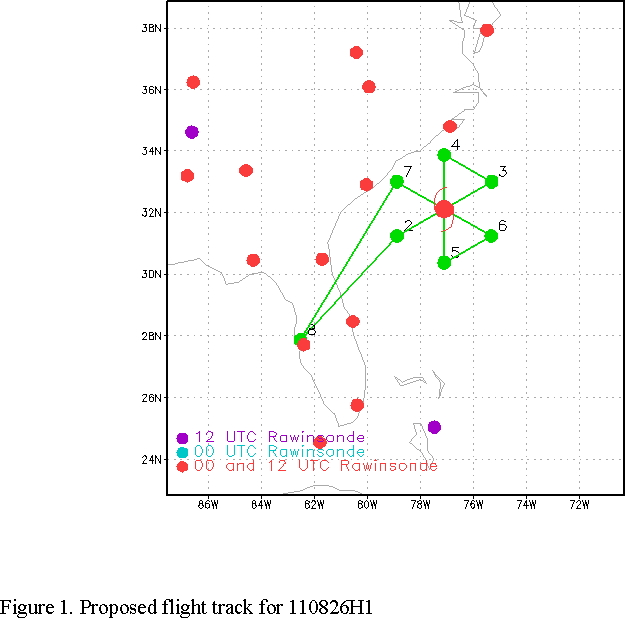
| Aircraft Commander | Carl Newman |
| Co-pilot | Chris Kerns |
| Co-pilot | Mark Sweeney |
| Flight Engineer | Paul Darby |
| Navigator | Devin Brakob |
| Flight Director | Ian Sears |
| Data Technician | Joe Bosko |
| Electronics Technician | Todd Richards |
| Lead Scientist | Rob Rogers (HRD) |
| Radar Scientist | Sylvie Lorsolo (HRD) |
| Dropsonde Scientist | Brad Klotz (HRD) |
| Observer | Mike Hirsch (AOC) |
| Observer | Beth Zimmerman (FEMA) |
| Observer | Kathryn Sullivan (DOC) |
| Observer | Shep Smith (NOAA) |
| Guest | Phil Celli (Fox News) |

Mission Plan :
NOAA 42RF will perform a Tail Doppler Radar (TDR) mission into Hurricane Irene. We wil fly a butterfly pattern (Fig. 1) at 8000 ft, with IP 105 nm southwest of center. Drop sondes at turn and midpoints, RMW and first and last center passes. Also try to do high-rain/light-wind drops. The storm continues to weaken, but wind field appears broad based on previous aircraft observations.
Mission Summary :
| Take off | Landing
| MacDill AFB, FL | 26/19:47 UTC
| MacDill AFB, FL | 27/02:21 UTC
| | ||
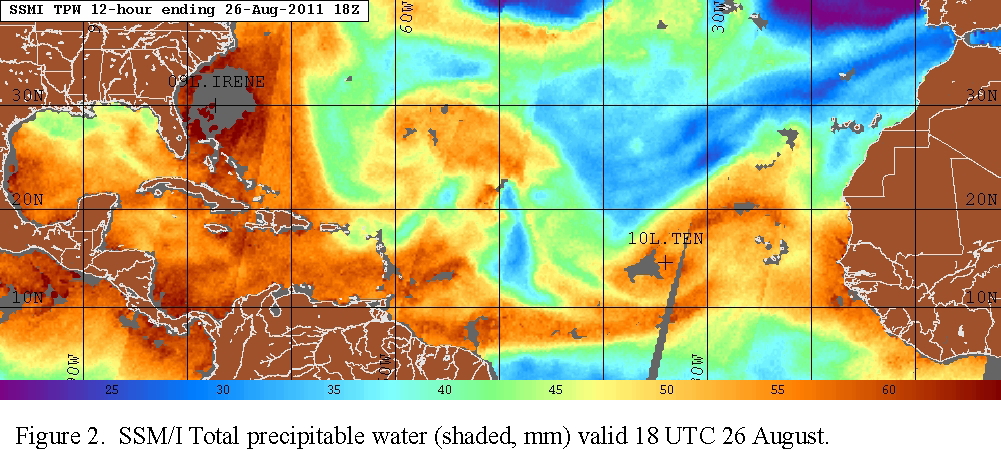
Irene remains in relatively moist lower-tropospheric humidity (Fig. 2), though it is certainly possible that its proximity to the eastern U.S. coast is causing some dry air to enter the system from the west side that is not depicted in the TPW plot shown here. Rawinsondes presumably would show that better. The 850-200 hPa CIMSS-derived shear remains of moderate intensity (~15 kt) and from the southwest (Fig. 3). Therefore the environment is presumed to remain at least moderately favorable for intensification (not accounting for possible dry air from the U.S.). Visible and infrared satellite imagery (Figs. 4a-b) continues to show a well-defined cloud shield, with obvious banded features all around the circulation center, but most well-defined on the north side. The infrared image shows cloud tops generally between -40 and -70 C, with a very small area less than -70 C on the northwest side of the storm. An 85 GHz plot (Fig. 4c) shows that all of the ice scattering is on the north and east side of the storm.
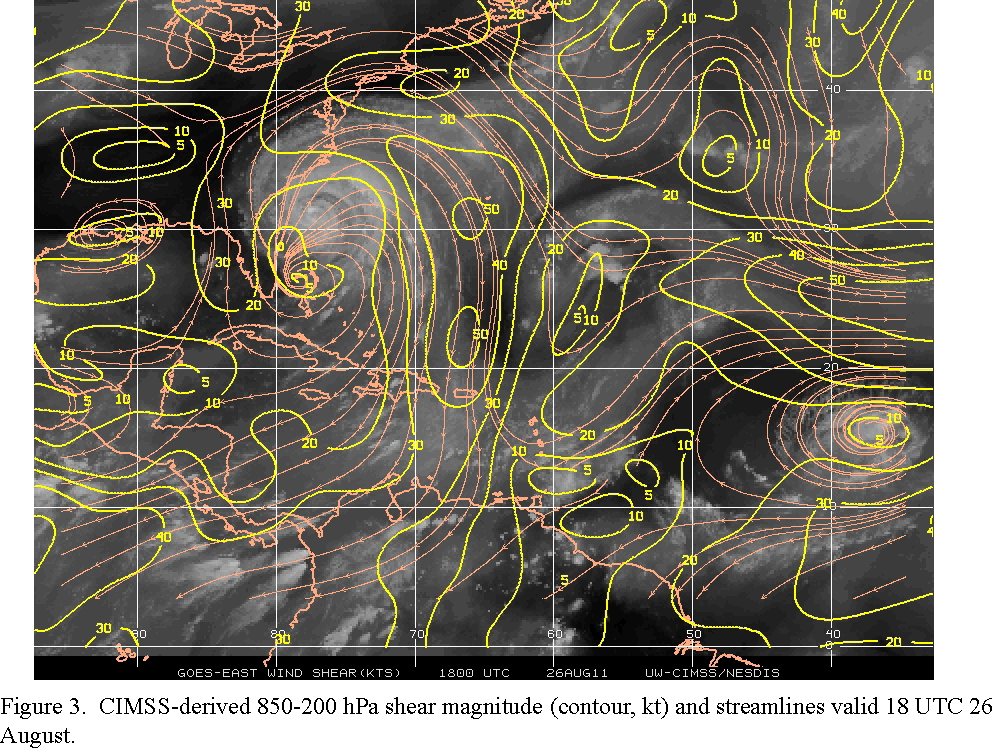

Takeoff was at 1957 UTC from MacDill AFB. The actual pattern flown (Fig. 5) was modified from what was planned. There was a dual-Polarization radar at Morehead City, NC, and there was a request for the aircraft to fly along the coast within 40 km of the radar to compare measurements from the cloud physics probes with the ground-based radar. So the IP was set to the south side, and at the end of the outbound leg to the north the aircraft extended further up the coast before beginning its downwind leg upwind of the radar.
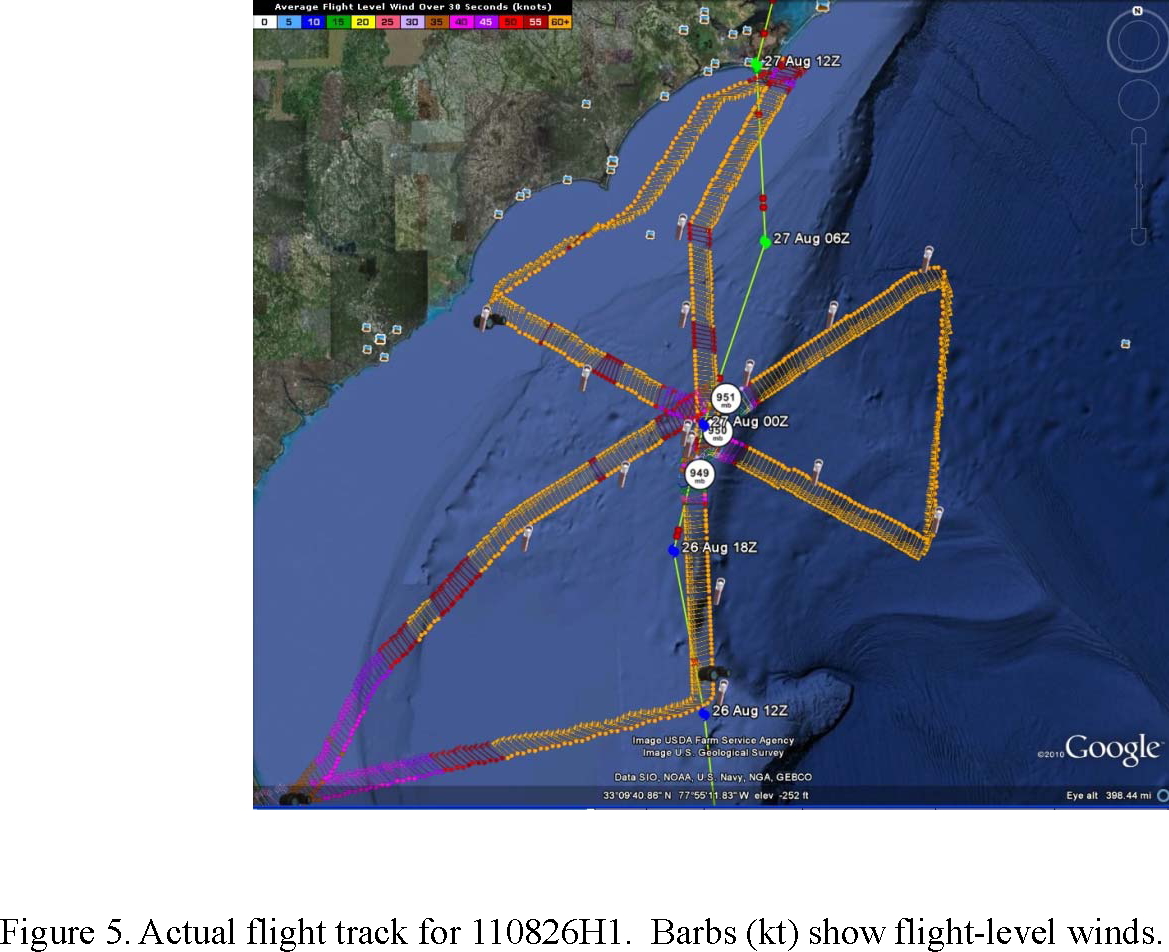
Radar composites from the aircraft (Fig. 6) show that peak winds at 1-km altitude had weakened slightly from the previous day, with maximum values of ~50 m/s on the east side of the storm. The wind maximum appeared to have rotated slightly upwind from the previous day, and the wind maximum at 6-km altitude was clearly in the southeast portion of the storm. Dropsonde measurements showed generally moist air (RH > 90%) at 1 km around the north and east side of the storm. On the south side, RH was a little bit lower (85 and 88%), perhaps indicating the presence of some drier air from the continent, but further investigation is needed to assess that. Vertical cross sections of the wind speed (Fig. 7) show that the storm had broadened considerably from the previous days. The lower-tropospheric wind maximum is now clearly in the south and east quadrant, extending up to 6-7 km. The inner core of strong winds is completely gone, and peak winds on the east side are about 110-120 km east of the center. Peak flight-level winds of 80 kt and SFMR winds of 60-65 kt were seen on the southeast and northeast side of the storm. A broad shield of moderate to heavy rain was seen on the north side of the storm. The center drop on the last pass had a splash pressure of 951 hPa, but the peak winds were still weakening as the circulation continued to broaden.
Mission Evaluation:
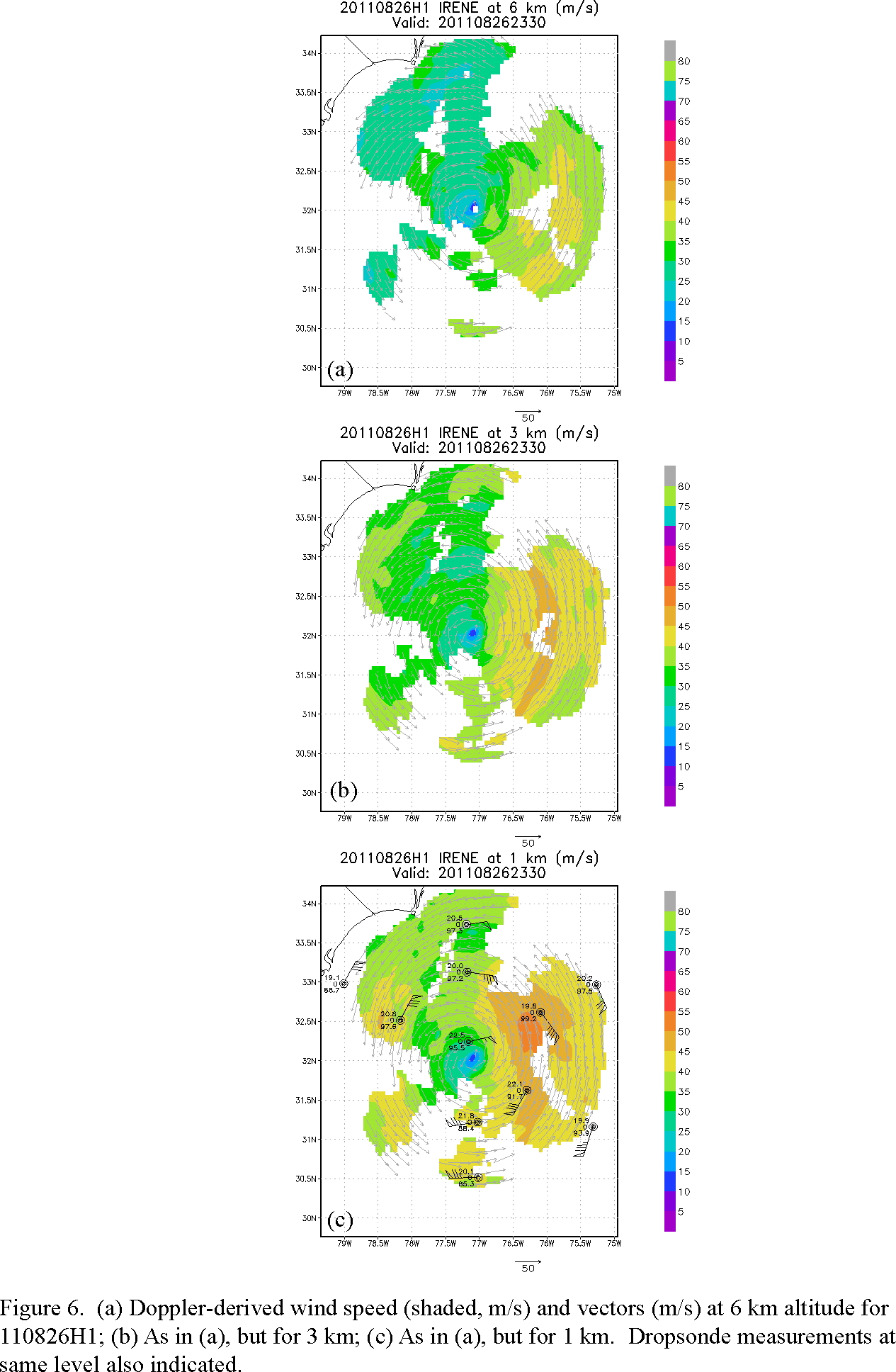
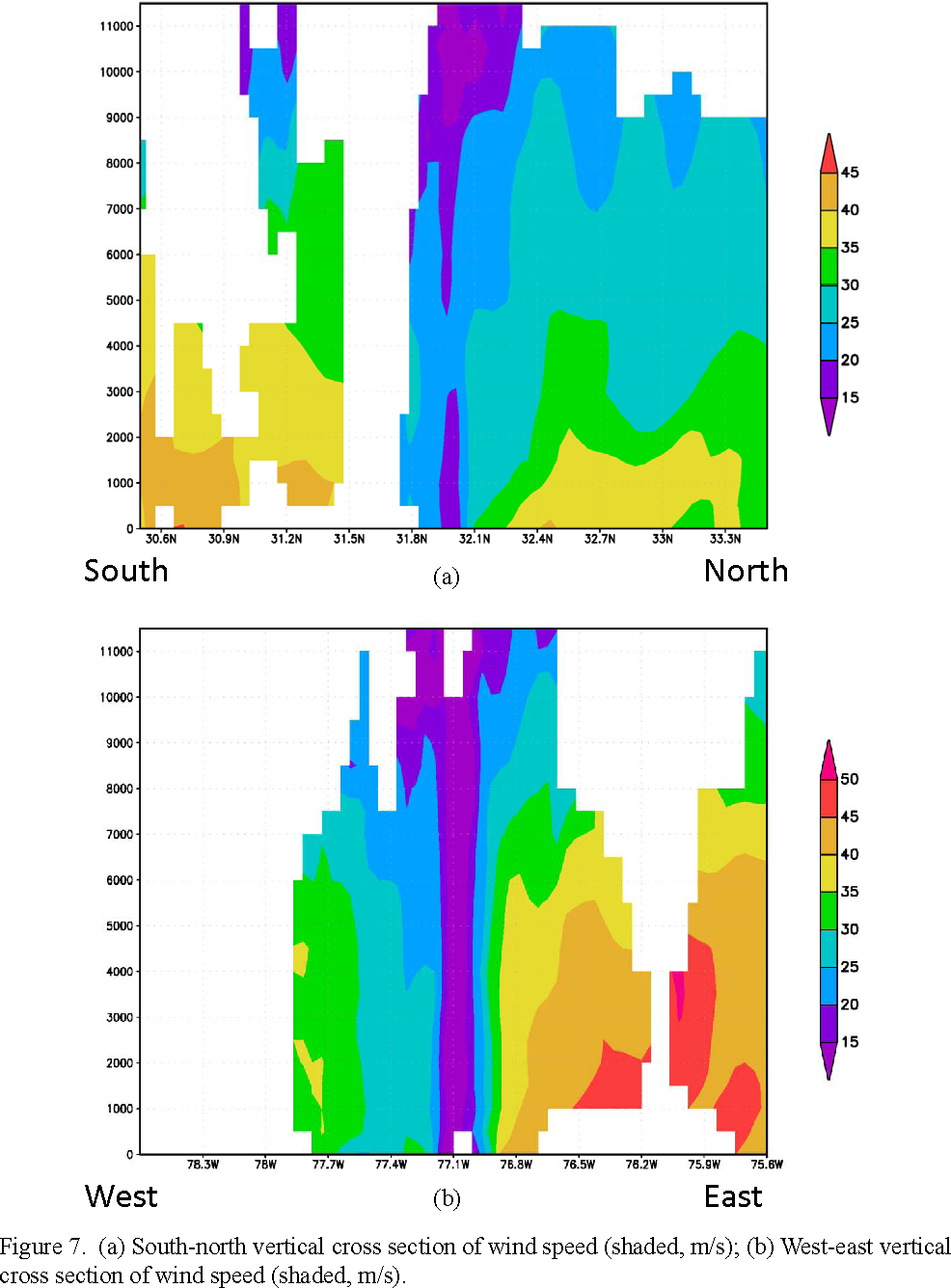
The mission accomplished the objectives. Three radar analyses were completed and transmitted, with 21 dropsondes released (including five failed drops). There were numerous problems with the sonde telemetry, possibly because of land interference or from cell phones on the plane. The cloud physics probes appeared to work well during the radar leg. There were some transmission problems to EMC for the radar analyses, but they appeared to have eventually made it through. The structural evolution from the previous flights continued - low central pressures but peak winds comparatively weak as the circulation broadened.
Problems :
The only problems were the sonde telemetry and the transmission of radar data to EMC.
Rob Rogers
Sept. 7, 2011
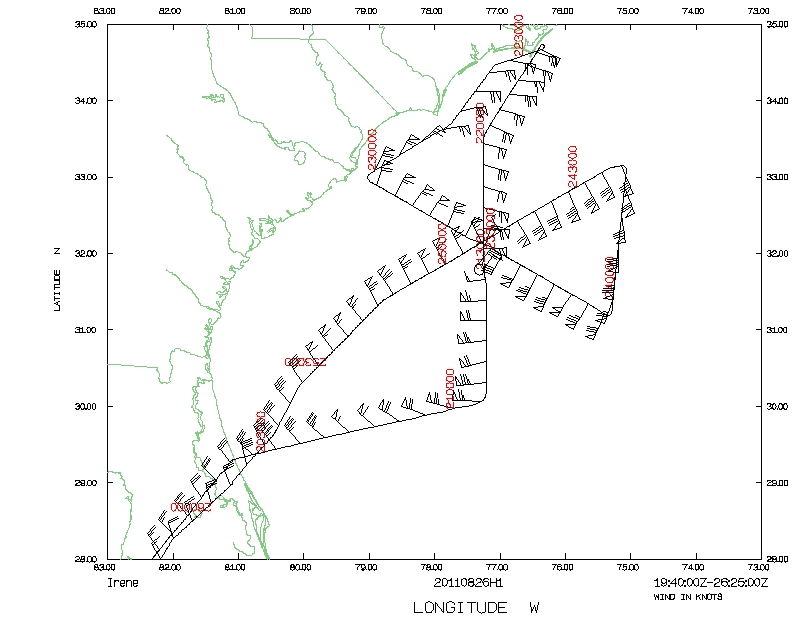 Track |
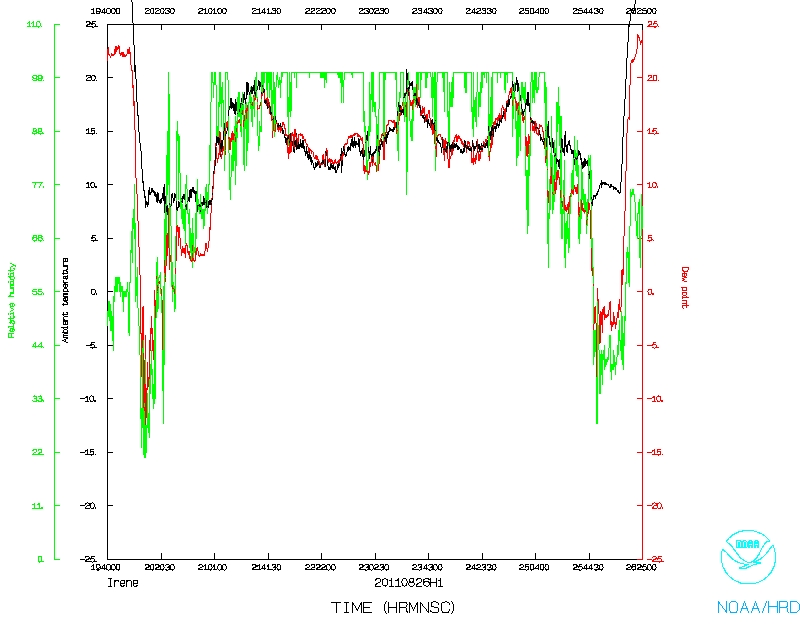 Temperature and Moisture |
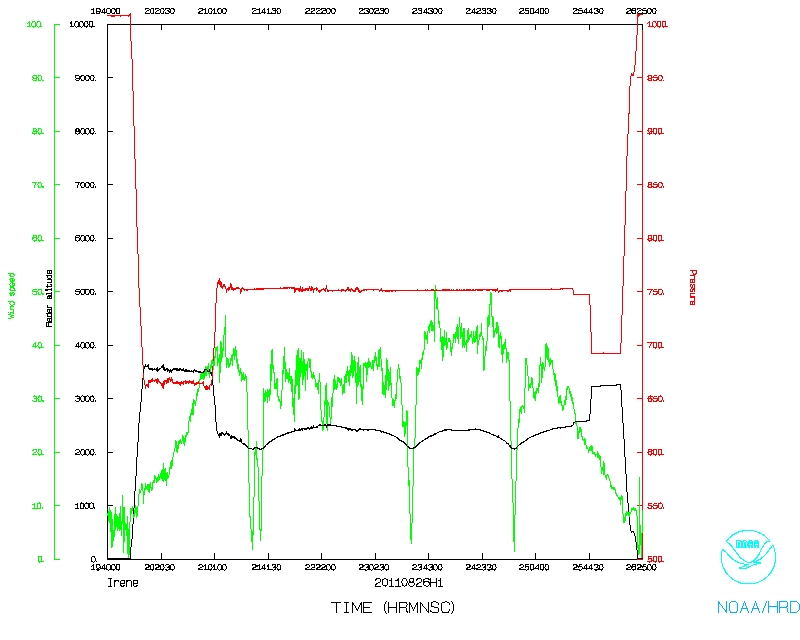 Wind and Atlitude |
Note: Vertical winds are suspect. Use with caution.
1 second data |
NetCDF flight leve data |
serial data |
SFMR (NetCDF)
FDir log | Error Summary | LPS log | Radar log | Dropsonde log